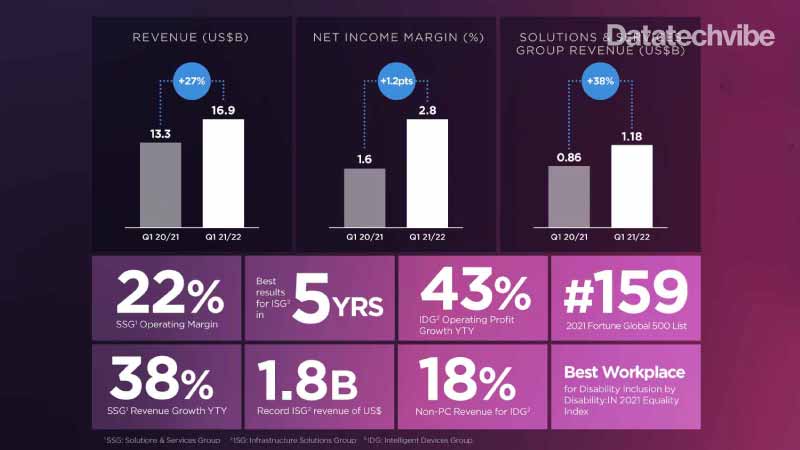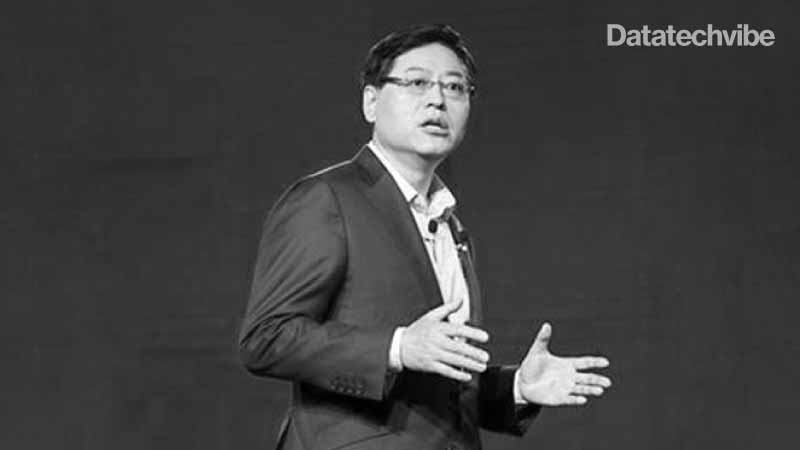In the last 15 years, one of the most successful business stories is how Lenovo integrated IBM’s PC unit and the iconic ThinkPad brand into its own, and leveraged itself into a strong global brand. It is arguably the No.1 PC player in the world.
The Chinese company’s focus on delivering innovative products, branching out in new areas and going beyond the PC, has been a key to its exponential growth.
Meeting the new needs in the new normal, the technology powerhouse is at the forefront of developing exciting and disruptive innovations. Its belief that tech transportability is key for hybrid work environments is behind its decision to launch the ThinkReality A3 Smart Glasses to improve remote collaboration. The smart glasses allows one to hook into a smartphone or computer and expand the view into something that exceeds office monitor setup — showing as many as five different virtual desktops.
Sure enough, Lenovo is big in PCs, but it has also been able to convince enterprises that they can bet on the company’s roadmap, which include wearables and connected devices.
During the last decade, Lenovo made big changes, making eight acquisitions, including buying IBM’s x86 server business, a segment that includes IBM’s System x, iDataPlex servers and other server maintenance operations. Those moves catapulted Lenovo’s transformation to a truly global company, its revenue surged past the $60 billion mark in May 2021.
In August, Lenovo Chair and CEO Yang Yuanqing in a statement said, “This quarter alone we’ve doubled profitability year-on-year while net income margin reached the highest in many years.” While revenue surged 27 per cent, earnings soared 119 per cent.

How it started
In 1984, it all began, quite humbly, at a guardhouse in China, when Legend Holdings was formed with an investment of $25,000. It turned out to be a fast-growing business venture. In just four years, in 1988, it opened for business in Hong Kong and by 1996 it became China’s largest PC company. In 2004, it was renamed Lenovo. And in 2005, it bought IBM’s PC unit. The rest, as they say, is history.
Business-oriented PCs are some of Lenovo’s most popular offerings, including its ThinkCentre desktops and ThinkPad notebooks, with a newer, sleeker ThinkBook line geared at small businesses. Desktop PCs and laptop series such as ThinkPad, ThinkBook, IdeaPad, Yoga, and Legion are its bestsellers, putting Lenovo at the very top of the industry.
In May, Lenovo announced a new lineup of PC accessories, called Lenovo Go, targeted specifically for people working in a hybrid workforce. The lineup includes a wireless mouse, laptop power bank, headphones with active noise cancelling, and a wireless keyboard.
The company’s growth is fuelled by its strategy to deliver products and services based on smart IoT, smart infrastructure, and smart vertical solutions. Now, the PC manufacturer’s portfolio includes servers, storage solutions, IT management software, smart TVs, tablets, smartphones, and even apps. By continuously innovating, the billion-dollar multinational company is a Fortune 500 frontrunner.
Adding new breadth to its product offerings
In 2014, Lenovo bought mobile phone handset maker Motorola Mobility from Google and extending its business relationship with IBM, it bought its low-end server business for $2.3 billion. In 2016, it expanded partnership with SAP to develop an agile cloud solution and collaborated with Google to develop the world’s first mobile device with 3D motion tracking and depth sensing.
While maintaining the leading position of being the largest PC company in the world, with about 24 per cent in market share, the Beijing-based company continued to add new breadth to its product offerings, including providing solutions for data centres, as it partnered with Nutanix to bring invisible infrastructure to data centres around the world.
Recently, with edge computing at the heart of digital transformation for many industries, Lenovo expanded its ThinkEdge portfolio with SE450 server, delivering an artificial intelligence (AI) platform directly at the edge to accelerate real-time business insights.
“With the ThinkEdge SE450 server and in collaboration with our broad ecosystem of partners, Lenovo is delivering on the promise of AI at the edge, whether it’s enabling greater connectivity for smart cities to detect and respond to traffic accidents or addressing predictive maintenance needs on the manufacturing line,” Charles Ferland, Vice President and General Manager, Edge Computing and Communication Service Providers at Lenovo ISG, said in a statement.
Lenovo focuses on analytics and AI as well — its ThinkSystem SR860 V2 and SR850 V2 AI-Ready servers help partners address customers’ high-performance data analytics (HPDA) needs, the company says. HPDA is the convergence of Big Data and High-Performance Computing (HPC). These mission-critical servers provide expansion capabilities, guarantee system uptime for superior data resiliency, and accelerate AI, data analytics, and VDI workloads using next-generation accelerators.
With a changing environment, in September, at Lenovo’s Tech World 2021, the company announced that it will expand Lenovo TruScale to provide “Everything-as-a-Service.”
TruScale, a subscription-based offering, allows enterprises to use and pay for data centre hardware and services — on-premise or at the edge — without having to purchase the equipment.

“A major trend that will reshape the IT industry,” said Yang about the model, under which Lenovo anticipates providing service to clients beyond delivering devices, hardware, software, or cloud solutions.
“Easy to scale, easy to upload, and download, choosing the platform as a service, and software as a service. Buying a solution from Lenovo will be as easy as buying a PC,” Yang added.
Clearly, Lenovo has a strong strategy to help customers of all sizes harness the value of data through a broad spectrum of analytics and AI.
Committing to a greener future
Lenovo is also among the global technology companies rising to this climate change challenge and driving low-carbon transformation. Its liquid cooling technology has become one of the most reliable solutions for data centres. It reduces energy consumption by up to 40 per cent, the company said.
At its manufacturing base in Hefei of East China’s Anhui province — where one out of every eight PCs sold globally is made, Lenono deploys Lenovo Advanced Production Scheduling System to improve production efficiency, saving more than 2,696 MWh of electricity annually. This annual saving of electricity translates to an emission reduction of 2,000 tons of carbon dioxide.
Its predictive maintenance solution for the energy industry helps improve wind turbine utilisation and power generation efficiency, reducing the client’s operating and maintenance costs by 5 per cent.
Offering everything from servers to Everything-as-a-Service to smartphones with all the devices in between, Lenovo is a dominant force in the technology space, employing over 57,000 people and operating in about 60 countries.
Going forward, cutting edge technology will continue to play a more vital role than ever before, as Yang said Lenovo will double its investment in research and development in each of the next three years.
“Companies play a central role in solving humanity’s greatest challenges,” said Yang. “Everywhere, and all the time.”
If you liked reading this, you might like our other stories
Company Closeup: All About ABBYY
Datatechvibe Explains: Tiny AI









